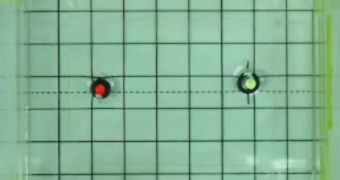Nanotechnology and the study of very small robots that could one day do a lot of good has been one important aspect for a number of researchers and the applications in which these robots could be used are many. A similar process has begun in the computer industry with the introduction of smaller and yet smaller components and chips.
If you think about a nanobot, it's supposed to be a very small robot with an operating device similar to a brain which can process received information and use its resources for different uses. To create a piece of technology small enough to be able to work with a human cell takes engineering to another level, but it also strongly related to the "brain" it uses, its processing unit. What's the use of a nanobot if it can't do anything, right?
Although it's possible to create these types of "creatures" without a strong enough processing unit, they would be of little or no use to us. The development of a small enough "brain" for the nanobot could prove to be quite a challenge, but a thought crossed my mind? if Intel is going to release an 80-core processor, that means that a lot of progress in this area has been done and the size of this "brain" is achievable in the near future.
Now not to leave behind an important argument about these nanobots, they also need to move within a human body, and in the favor of this, a group of researchers in North Carolina have developed a propulsion system for them. The principle is simple at the first glance; it uses an electronic diode which has an electrical current applied to it. It creates an electrical field between the anode and cathode which, in turn, produces locomotion through the acceleration of ions. This is just one of the first tests to which this technology has been put through and we'll see advancements being made in this domain in the future, being rather far away from saying "Beam me up, Scotty."

 14 DAY TRIAL //
14 DAY TRIAL //